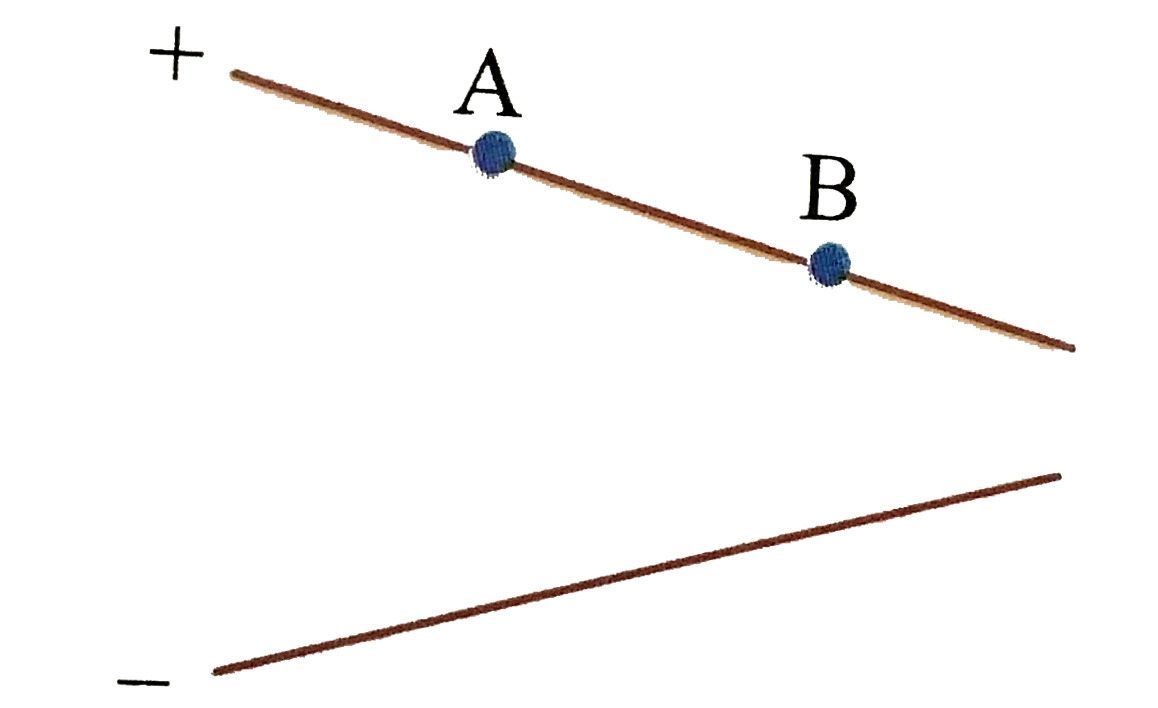0.2F capacitor is charged to 600V by a battery. On removing the battery it is connected with another parallel plate condenser of 1F. The potential decreases to
100 volts
120 volts
300 volts
600 volts
The correct Answer is:A

V0.2=(0.21+0.2)×600=100 Volt .
Topper's Solved these Questions
- BOOK - ERRORLESSCHAPTER - ELECTROSTATICSEXERCISE - PAST YEARS QUESTIONS56videos
ELECTROSTATICS
- BOOK - ERRORLESSCHAPTER - ELECTROSTATICSEXERCISE - ASSERTION & REASON25videos
ELECTROSTATICS
- BOOK - ERRORLESSCHAPTER - ELECTROSTATICSEXERCISE - NCERT BASED QUESTIONS (Capacitance)59videos
ELECTROSTATICS
- BOOK - ERRORLESSCHAPTER - ELECTRONICSEXERCISE - Assertion & Reason26videos
ELECTRONICS
- BOOK - ERRORLESSCHAPTER - MAGNETIC EFFECTS OF CURRENT EXERCISE - ASSERTION & REASON18videos
MAGNETIC EFFECTS OF CURRENT
Similar Questions
A 2μF condenser is charged upto 200 volt and then battery is removed. On combining this with another uncharged condenser in parallel, the potential difference is found to be 40 volt. Find the capacity of second condenser (in μF)
View SolutionA μF capacitor C1 is charged to V0=120V. The charging battery is then removed and the capacitor is connected in parallel to an uncharged +4μF capacitor C2.

(a) what is the potential difference V across the combination?
(b) what is the stored energy before and after the switch S is closed?View Solution
Knowledge Check
- Question 1 - Select One
STATEMENT-1: A parallel plate capacitor is charged by a battery. The battery is then disconnected. If the distance the plates is increased, the enegry strored in the capacitor will decrease.
STATEMENT-2: Work has to be done to increase the separation between the plates of a charged capacitor.AStatement -1 si Ture, Statement -2 is True, Statement -2 is a correct explanation for Statement -1.BStatement-1 is True, Statement-2 is True, Statement-2 is Not a correct explanation for Statement-1.CStatement-1 is True, Statement-2 is False.DStatement-1 is False, Statement-2 is True. - Question 2 - Select One
A 2μF condenser is charged upto 200 V and then battery is removed. On combining this with another uncharged condenser in parallel, the potential differences between two plates are found to be 40 V. The capacity of second condenser is
A2μFB4μFC8μFD16μF - Question 3 - Select One or More
A capacitor C is charged to a potential V by a battery. It is then disconnected from the battery and again connected with its polarity reversed to the battery
AThe work done by the battery is CV2BThe total charge the passes through battery is 2 CVCThe initial and final energy of the capacitor is sameDThe work done by the battery is 2CV2
A parallel plate capacitor is charged by connecting it to a battery. The battery is disconnected and the plates of the capacitor are pulled apart to make the separation between the plates twice. Again the capacitor is connected to the battery (with same polarity) then the potential difference between the plates increases when the plates are pulled apart (yes or not)
View SolutionThe plates of a parallel plate capacitor are charged by a battery and the battery is disconnected after the charging. Now, the plates are placed as shown in the figure. Then (plates are not parallel to each other).
 .View Solution
.View SolutionA capacitor is fully changed with a battery. Then the battery is removed and a coil is connected with the capacitor in parallel, current varies as
View SolutionThe plates of a parallel plate capacitor are charged up to 100v. Now, after removing the battery, a 2mm thick plate is inserted between the plates Then, to maintain the same potential deffernce, the distance betweem the capacitor plates is increase by 1.6mm. The dielectric canstant of the plate is .
View SolutionA 80 pF capacitor is charged to 15 V by connecting it to a battery. How many electrons are transferred from one plate to another?
View Solution

